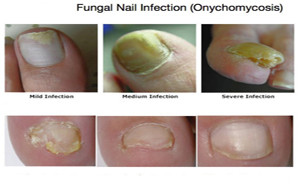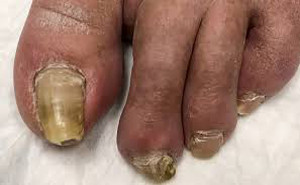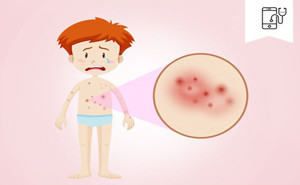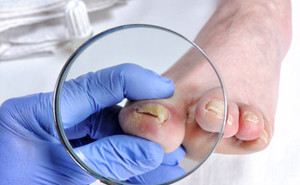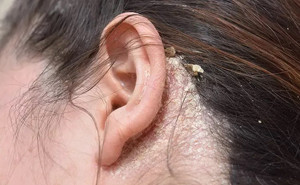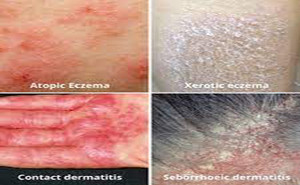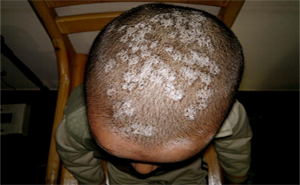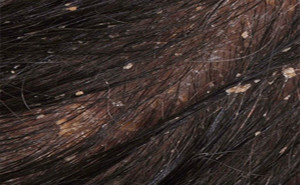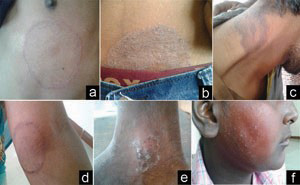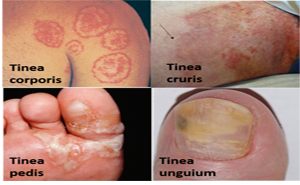Dermatologic-disorders
JAMA: The Journal of the American Medical Association: Published
on January, 2018TAKE-HOME MESSAGECLINICAL QUESTIONWhich oral antifungal medication is
associated with the highest clinical (ie, normal appearance of the toenail) and
mycological (negative culture, microscopy, or both) cure rates vs placebo or
other antifungals when used to treat f...
Journal of the European Academy of Dermatology and Venereology (JEADV): Published
on March, 2020Onychomycosis refers to persistent
fungal nail and adjacent skin infection by dermatophyte fungi, non-dermatophyte
fungi or yeast. It is the most common nail disease accounting for 90% of toe
nail infections worldwide.Dermatophytes are the most
freq...
Journal of the European Academy of Dermatology and Venereology (JEADV): Published
on November 2022Atopic dermatitis (AD), also named
atopic eczema, is the most common, chronic, recurrent, inflammatory disorder of
the skin, affecting 5%–30% of children worldwide. Most AD subjects
suffered from persistent skin dryness, pruritus, eczematous rash,...
Journal of Drugs in
DermatologyToenail onychomycosis is a common disease in which treatment options
are limited and treatment failures and disease recurrence are frequently
encountered. It usually requires many months of treatment and recurrence
may occur in more than half of the patients within 1 year or more after the
infection has been erad...
PubMed Central: Published
on August, 2022TAKE HOME MESSAGE:Seborrheic dermatitis (SD) is a
common chronic inflammatory skin disorder that mostly affects young adults in
areas rich in sebaceous glands (scalp, face, and trunk). In adolescents and adults, SD
clinical presentation may range from mild patches to diffuse scalp scaling. In
infants, i...
PubMed Central: Published on January 2019Tinea (Pityriasis) Versicolor is a
common, chronic, superficial fungal infection caused by Malassezia spp.
It is characterised by hyperpigmented, hypopigmented macules and patches on the
face, upper trunk, back, chest paralleling the density of sebaceous gland. Several topical and systemic
antifungal age...
American Family
Physician (AFP) Journal:Seborrhoeic Dermatitis (SD) is a very common chronic and/or
relapsing inflammatory skin disorder presenting with a papulosquamous
morphology in areas rich in sebaceous glands, particularly the scalp, face, and
body folds.In adolescents and adults, SD clinical presentation may range
from mild patches to d...
Journal of the European
Academy of Dermatology and Venereology (JEADV): Published on November, 2021Tinea capitis is a highly contagious scalp condition that is
common in children 3-7 years of age but can be found in all ages. It can
present with a spectrum ranging from scaly, patchy alopecia with or without
"blackdots" to purulent inflammation...
The Journal of Dermatology: June, 2022Coronavirus disease 2019 (COVID-19)
caused by severe acute respiratory syndrome coronavirus 2 (SARS-CoV-2) was
declared a pandemic by the World Health Organization, and COVID-19 continues to
have a major impact on society. Numerous studies have reported
impaired health sequelae after COVID-19 recovery, one...
PubMed Central: BMJ Clinical EvidenceSeborrhoeic dermatitis affects at
least 3% to 10% of the population and causes red patches with greasy scales on
the face, chest, skin flexures, and scalp.The cause of seborrhoeic dermatitis
is unknown. Malassezia yeast species are thought to have an
important role.The inflammatory process may be
mediated i...
BioMed Central (BMC Dermatol) Journal: ECTODERM
IndiaSuperficial fungal infections are caused by dermatophytes,
non-dermatophytic moulds and commensal yeasts. Dermatophytes, the most common
causative agents, are assuming high significance in developing countries like
India.Currently, dermatologists across India are inundated with
cases of derm...
International Journal
of Research in Dermatology (IJORD): Published on May, 2021The number of
new cases of dermatophytosis on
the rise but also
a humungous number of
patients are experiencing
a great degree
of relapses and recurrences.
Causes like drug
resistance, poor drug compliance, inadequate...
